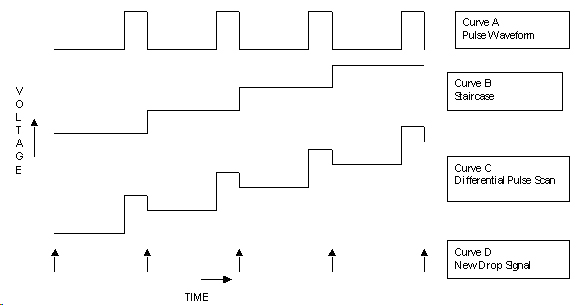Applied Waveform and Data-Acquisition
In a differential pulse voltammetric experiment, a complex voltage scan is applied to the working electrode in an electrochemical cell. This waveform can be constructed as a sequence of fixed height pulses (Curve A, below) added to a voltage staircase (Curve B, below). The resulting waveform is seen in the figure below (Curve C).

The pulse height is generally 20 to 50 mV. The staircase has 2 to 10 mV steps. In the sketch above, notice that the pulse and staircase steps are synchronized. Unlike square-wave voltammetry, the pulse time is much shorter than the staircase stepping rate, and the waveform is asymmetrical.
The staircase waveform in the Physical Electrochemistry system is defined to begin at Initial E and end at Final E. The duration of the scan is defined by the staircase step height (Step Height), the step time (Pulse Time), and the initial and final potentials.
Scan Time = Pulse Time × (Final E – Initial E) / (Step Height)

Comments are closed.